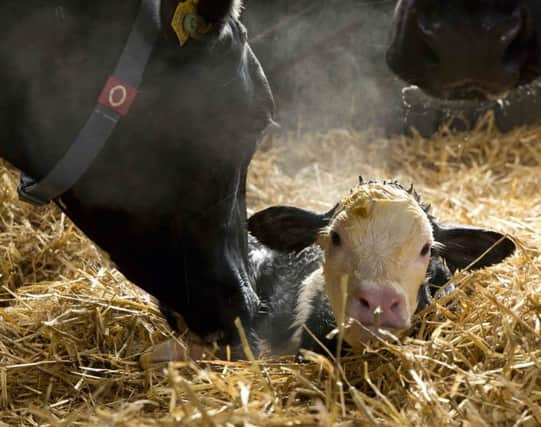There's a higher risk of complications around the time of calving this year


Many of these health problems are associated with the drop in blood calcium that occurs at this time, which is due to the sudden calcium demand to produce colostrum and milk. If this increase in calcium demand is large enough, it can result in milk fever and downer cows. Even if cows do not show signs of milk fever, the calcium levels in blood can still drop below normal. For every case of milk fever in a herd, four other cows may have below-normal blood calcium levels.
Calcium is a mineral that is required for all muscle contractions therefore, a drop in blood calcium causes a decrease in muscle contractions. If the muscle at the end of the teat is not as tight, this can result in higher rates of mastitis. If rumen and intestine movements decrease, intakes drop, which may then place cows into negative energy balance. Calcium is also essential for an effective immune system, so low blood calcium can lead to infections, retained cleanings and dirty calf-beds.
Advertisement
Hide AdAdvertisement
Hide AdGood cow management and nutrition around calving time can make a significant difference to the control of blood calcium and reduce many of these problems. Ensuring the fresh cow diet is highly palatable and energy dense is critical to maintain good intakes. Some highly palatable post-calving drinks such as Reviva are a good source of energy and bioavailable calcium for freshly calved cows.
With the dry cow diet, there are key points to maintaining calcium balance in the freshly calved cow. If the dry cow diet contains chloride and sulfur, these have a negative charge and make the enzymes that control calcium more efficient. Studies have shown that these ‘negative DCAD’ diets are beneficial in increasing intakes, milk production and reproductive performance, and in decreasing the chance of infections. Adding anionic salts to the diet helps achieve this.
In contrast, diets that contain sodium and potassium (potash from slurry) have the opposite effect. Due to the ‘positive DCAD’ charge, the enzymes that control calcium are more sluggish, and problems around calving are more common.
How do I know what the DCAD value of the silage is?
A sample of dry cow silage can be sent for analysis of feeding quality and mineral balance. The 2017 Northern Irish silage samples that have been analysed by Trouw Nutrition have highlighted a high potassium percentage, which contributes to a highly positive DCAB.
Advertisement
Hide AdAdvertisement
Hide AdCompared to last year, these are higher, indicating that many farmers may face an increased risk of complications around calving. To check your dry cow silage, ask your local nutritionist about sending a sample for testing. This could give an early warning as to high-risk silage and allow you to prevent many problems. Anionic salts, also known as a CAB corrector pack, can be added to dry cow minerals to help correct the DCAB value. Always ask your local nutritionist for advice.